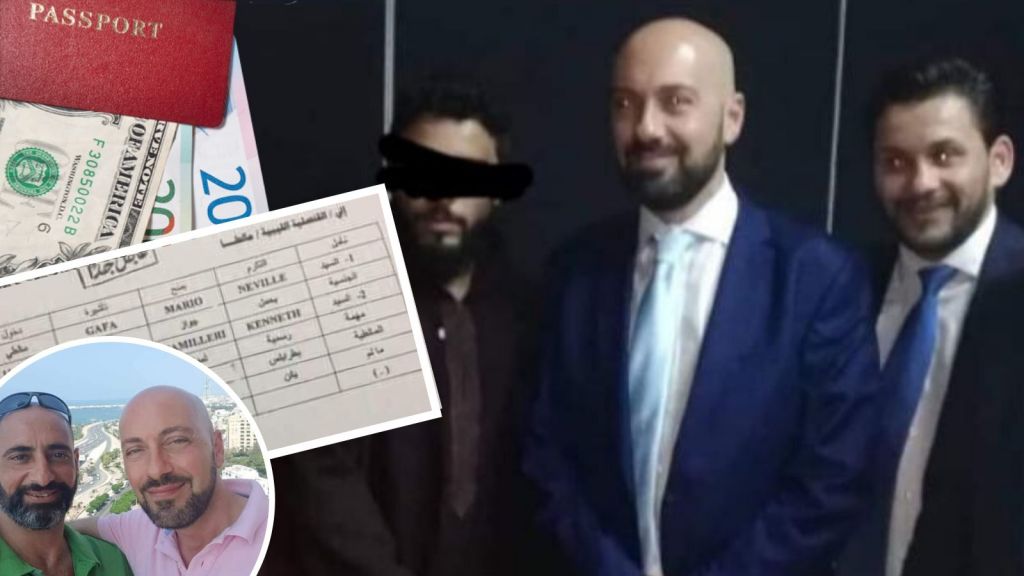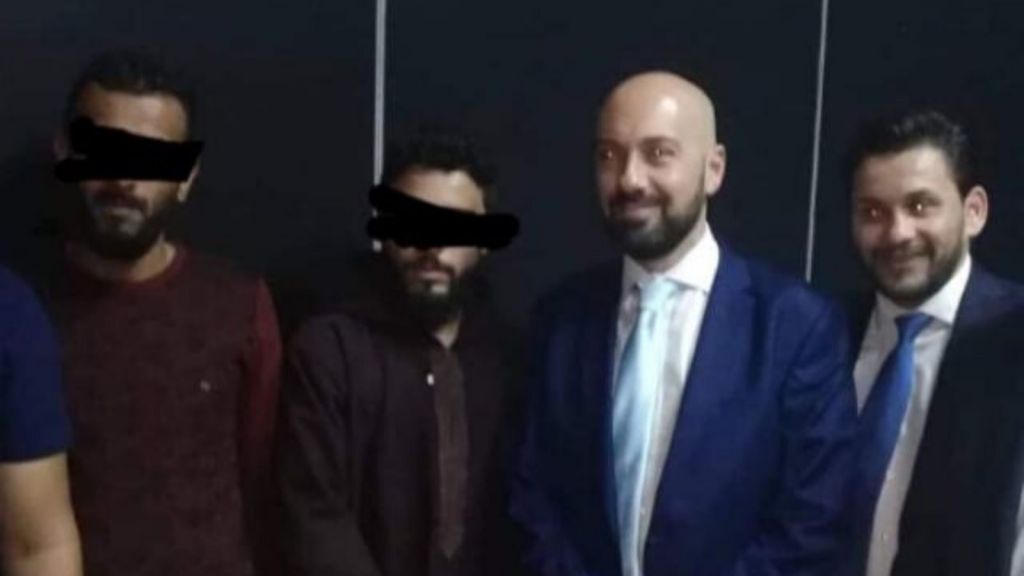EXCLUSIVE: What Neville Gafa Really Did On His Mysterious Libya Trip – Silencing Witnesses In The Medical Visa Racket

Former OPM employee Neville Gafa’s mysterious trip to Libya in November 2018 might have finally been explained with recordings sent to Lovin Malta revealing that he used the visit to silence crucial witnesses in a multi-million euro medical visa racket with €300,000 bribes.
Gafa has confirmed with Lovin Malta that a meeting with the witnesses took place but categorically denied any attempts to bribe the witnesses.
“Yes, it happened. I went there to confront them because of the false allegations they were making. I’ll soon publish the evidence showing that these same people had got the service in Malta,” Gafa said.
Under oath recently, Gafa confirmed that he had visited the country in November 2018 with former Prime Minister Joseph Muscat’s then-security guard Kenneth Camillieri, both of whom used a diplomatic visa. However, he insisted in the public inquiry looking into the assassination of Daphne Caruana Galizia that he was on unofficial government business over the migrant crisis.
Exclusive recordings and photos heard by Lovin Malta through interlocuter Ivan Grech Mintoff now show how Gafa rushed to the war-torn country to try shut up critical witnesses in the medical visa scandal.
Back in August 2016, The Malta Independent revealed that dozens of Libyan were forced to hand over payments to Gafa to secure their medical visas, who were granted access for treatment in Malta due to the Libyan civil war. There are claims that Gafa could have made over €3 million from the racket since it began operating in 2014.
A libel case was opened soon after.

Neville Gafa at the meeting on 18th November 2018
On Thursday 15th November 2018, Grech Mintoff submitted recorded testimonies from 13 witnesses and victims of the medical visa scandal, all of whom implicated Gafa as the key figure in the racket.
That day, Magistrate Francesco Depasquale ordered that the witnesses provide their testimonies to the courts either in person or through Skype. By Saturday 17th November, Gafa and Camillieri found themselves in Libya.
On Monday 19th November 2018 at 5:30pm, Gafa held a meeting with three representatives of the 13 victims at the police headquarters in Tripoli. During that meeting, sources said, Gafa offered between €200,000 and €300,000 to buy the silence of the witnesses.
“You need to tell the Syrian [the whistleblower] to stop mentioning people because that is creating problems,” Gafa says on the recording.
The representatives reportedly rejected his offer, telling Gafa that they expected an official apology and close to €500,000 of compensation, and not some under the table bribe.
Gafa, who has confirmed that the meeting took place, has denied discussions over a bribe.
“I wouldn’t be in Malta if I had those kinds of millions. The bank knows what I have and believe me there have been strong investigations into my work,” he said.
Five men would testify in court via Skype on 28th October 2019, repeating the claims of the €300,000 bribe. They also claimed that they were kept as prisoners while receiving treatment Malta’s hospital.
“I’m a Muslim, so I had asked Gafa if he could give me back my amputated leg so I can bury it as according to my faith. He told me he fed it to the dogs,” one victim says in one of the recordings.
During last week’s testimony in the public inquiry, Camilleri insisted that he had no idea what Gafa’s November 2018 trip was about. However, the recordings show that he plays an active role during the meeting.
“Why did they do it, Nev? What was the reason,” Camilleri says.
On Tuesday 20th November 2018, Gafa was photographed with Libya’s Interior Minister Fathia Pasha, in what the Libyan government described as a meeting with the “personal envoy of the Prime Minister of Malta” to discuss “bilateral relations” between the two nations.
Both Malta’s Prime Minister and Gafa denied it was the case, insisting that the former was on a personal trip to the country. Reports he had dodged Libyan security officers ordered by a furious Libyan government to detain him at a Tripoli airport were “fake news”, according to Gafa.
However, sources have claimed that he used the fraudulent meeting to provide an alibi for his visit, but Gafa insists that it was just an issue of translation between him and the Libyan government.
Meanwhile, a letter seen by Lovin Malta shows Libyan Authorities slamming their Maltese counterparts for not using the proper channels, especially with regards to Gafa’s visa.
At one point on the trip, Gafa “bumped into” Haithem Tajour, the leader of a militia group known as the Tripoli Revolutionaries Brigade. He had initially brushed off this meeting as a chance encounter on the street. However, he recently told the public inquiry that he was on unofficial government business over the migrant crisis.
Sources claimed that this meeting had another purpose with the witnesses now regularly subject to threats and intimidation from high government officials in still war-torn Libya. Gafa denied the claim.
Gafa and Camilleri returned to Malta soon after.

Proof Neville Gafa and Kenneth Camilleri used diplomatic passport
The pair have been thrust into the spotlight ever since the arrest and charge of Yorgen Fenech in connection with the assassination of journalist Daphne Caruana Galiza.
Middleman Melvin Theuma has claimed that Camilleri fronted a €3 million bail request for the three men charged with carrying out the murder. He also allegedly informed Melvin Theuma that the state had identified three mobile numbers of people involved in the killing. Theuma’s number was on the list.
Theuma said the claims can be corroborated by gaming company director Johann Cremona, who was with Camilleri at the time. Both Cremona and Camilleri will testify in court on 27th March.
Meanwhile, Gafa has faced serious questions over his extremely close relationship with the Prime Minister’s former Chief of Staff Keith Schembri, who remains under investigation for the murder.
The medical visa libel case continues in April, with several key figures in the racket set to testify. However, questions remain as to how exactly a criminal inquiry was never opened into the case and the potential silencing of the witnesses.